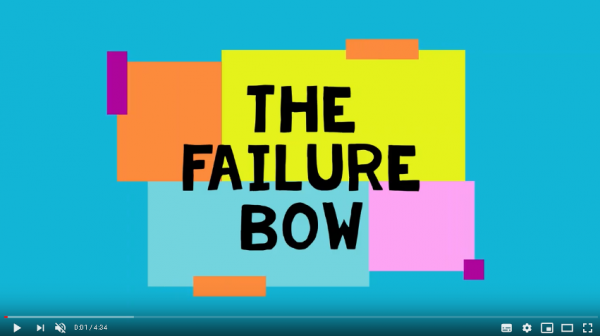Wabi-sabi. (Whah-bee/Saw-bee). C’mon say it with me. I know you want to.
Just saying it makes me feel a little better. These two strange words and the concept it encapsulates, has changed the way I look at failure, my mental health, my life, humanity. Seriously. I was introduced to it by the same dear friend who sent me the link of the Thich Nhat Hanh recording about bringing kindness into mindfulness which I wrote in this post.
Yes, she is one wise woman, this friend of mine! You know who you are.
What is wabi-sabi? Contrary to what I thought it was, it’s not related to wasabi or sushi. Though it is of Japanese origin.
Derived from Buddhist teachings and ancient Japanese philosophical ideals, wabi-sabi is a world perspective centered on the acceptance of beauty that is “imperfect, impermanent, and incomplete”. 1
Doesn’t that bring you a little bit of relief just reading that?
Another term for it is ‘flawed beauty’. The modern translation might be ‘perfectly imperfect’.
The Japanese art form, Kintsugi reflects it brilliantly. Kintsugi is the process where cracked pottery is repaired with gold lacquer to highlight the beauty of the imperfection or damage rather than hiding it.
Why have I found this idea so powerful? Because in our curated Instagram lives, it celebrates imperfection that inevitably is part of life. That’s my kind of world view.
When recovering from mental illness, or an addiction, or let’s face it, just plain living life, mis-steps are part of the process, not an exception to it. Like the saying goes: Progress not perfection. Its approach to beautiful messiness is a pragmatic and compassionate one. An approach that, particularly with the creative process or the onslaught of depression, can be sorely absent.
I introduce this concept in my creativity playshops. You’ll also have a chance to experience it in my *FREE* webinar Catalyst for Creativity and Courage: Intro to Telling Your Stories on October 25.
I partner wabi-sabi with an improv exercise that underlines the very essence of it. No, we don’t thwack each other with blobs of gold paint or break glasses and put them back together again with glitter tape. It’s called the Failure Bow.
The Transformative Power of the Failure Bow
The ‘failure bow’ hails from the world of improv, but has wider applications than just on the stage. It, along with understanding wabi-sabi, can reframe failure as part of success and the creative process.
The idea of celebrating mistakes has taken off even in corporate settings. You can find variations of it at MomsRising’s “joyful funerals” for failed projects or FailFest as organized by DoSomething.Org. Beth Kanter’s article explains them in more details.
Innovation and creativity die if stifled by the fear of failure. Recovery can be stopped in its tracks, and the joy of living can too if perfectionism isn’t tamed.
Here’s the exercise. Do it and I guarantee you’ll feel a little happier.
‘Failure Bow’ (takes less than 30 seconds)
1. You can do this alone or in a group.
2. Stand in a ‘super hero’ pose. You know, we all have one – even if we haven’t done it since we were 10. Feet hip width apart; hand on hips, chest out, head up and an ear to ear grin.
3. Then lift your arms in the universal “V” victory position and happily, shamelessly, proudly say: “I failed!”
4. And… you guessed it…take a bow (don’t shy away from it – full on bow, bending at the waist – several times if the spirit moves you).
5. Then if you’re in a group, everyone else around you claps, whoots, and hollers for you, celebrating your gaffe with you.
Variations:
In the Moment Failure Bow
As soon as you’ve noticed you’ve made a mistake – immediately do the failure bow to counteract any self-judgment that might rise. The smile alone will help.
Intentional Snafu Surrender Bow
- Before you get into your super hero pose, think of a mistake you made that you’re still hanging onto (big or small doesn’t matter).
- Get in your super hero pose holding that mistake in your mind.
- As you lift your arms, imagine the energy of that snafu running up your arms to the tips of your fingers.
- As you yell “I failed” and bend over to take a bow, imagine all the energy and emotion of that mistake drain out of your hands and surrender into the earth.
Why does it work?
1. It helps us redefine failure, Ted DesMaisons, Stanford University instructor, suggests, it can “(lead) us to more productive action or more empowered choices going forward.”
2. According to a Beth Kanter’s 2013 Harvard Business review article it “alters our physiological response to failure by removing the demons of self-doubt and self-judgment. Without those holding us back, we can be more flexible and improve results and learning.”
3. Both the wabi-sabi ethos and the simple failure bow exercise gives a positive view of mistakes preventing us from falling into immobility and self-condemnation.
4. They offer a psychological and physical approach to fully embody failure as part of creativity, success, work and life.
Through wabi-sabi and the failure bow we can learn, flub by flub, to take ourselves and our mistakes less seriously and increase our self-compassion.
Here’s a filmed version of me explaining the Failure Bow. Send me YOUR failure bow videos.
Let’s unite in the love of our failures and create a FAILURE REVOLUTION! The world will be a kinder, softer, more perfectly imperfect place because of it.
© Victoria Maxwell
1 Koren, Leonard (1994). Wabi-Sabi for Artists, Designers, Poets and Philosophers. Stone Bridge Press. ISBN 1-880656-12-4.





Leave a Reply
Want to join the discussion?Feel free to contribute!